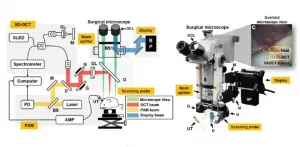Some English bulldogs thought to have cancer may have newly identified syndrome
2021-01-05
(Press-News.org) DENVER/January 5, 2020 - Some English bulldogs diagnosed with a common cancer may instead have a newly described, non-cancerous syndrome called polyclonal B‐cell lymphocytosis. The discovery was made by Morris Animal Foundation-funded researchers at Colorado State University during a study to better understand B-cell chronic lymphocytic leukemia (BCLL). The team published their findings in the Journal of Veterinary Internal Medicine.
"This could save some dogs from being misdiagnosed, treated for cancer or even euthanized when they shouldn't be," said Dr. Anne Avery, Professor, Department of Microbiology, Immunology and Pathology at Colorado State University. "The dogs may look to their veterinarians like they have leukemia, based on original diagnostics, but they don't actually have cancer."
In a previous BCLL paper published by Dr. Avery's team, they identified different breeds at an increased risk for that tumor type. One breed was English bulldogs, but the dogs had a unique presentation as compared to the other breeds. English bulldogs were significantly younger when they presented and also had differences in what their B-cells (antibody-producing white blood cells) expressed on their cell surface when analyzed by flow cytometry. That led researchers to wonder whether English bulldogs truly had BCLL or a different, previously unidentified disease.
For this retrospective study, the team identified 84 cases with increased numbers of B-cells in the blood, drawn from their database of 195 English bulldogs. The team analyzed the serum of these dogs to determine the types of antibodies they produced. Since many of the dogs had enlarged spleens, the team also took a closer look to see what kinds of cells expanded there.
Then researchers performed an assay to determine if the B-cells were identical or not. If they were identical, it would suggest they arose from a single cell and likely would have been cancerous. The team also examined the sexes of the dogs, as well as the ages and what clinical signs were present (if any) when the blood was drawn.
The team found that 70% of the dogs did not have cancer. These dogs tended to be young, some just 1 or 2 years old when they developed the syndrome. Three-quarters of the dogs were male, and more than half had enlarged spleens. Most of the cases had hyperglobulinemia, an excess of antibodies in the blood stream. The team hypothesized that this syndrome has a genetic basis.
"This important finding demonstrates that we shouldn't assume that a high B-cell count always indicates cancer in English bulldogs," said Dr. Janet Patterson-Kane, Morris Animal Foundation Chief Scientific Officer. "This is very important information for veterinarians who may initially see these patients in their clinic."
The team is looking for evidence of this syndrome in other breeds, but they believe it is rare in dogs other than English bulldogs. The group's next step is to look for the genetic mutation that leads to this syndrome. They would also like to follow the dogs for a longer period to learn if there are health consequences to persistently high B-cell numbers.
The findings in this new study clarify the results from the original BCLL research, according to Avery. Rather than being at high risk for BCLL as originally thought, English bulldogs develop a benign syndrome that has many similarities to leukemia. The syndrome almost certainly has an underlying genetic cause and does not appear to have a malignant clinical course.
INFORMATION:
Morris Animal Foundation, headquartered in Denver, is one of the largest nonprofit animal health research organizations in the world, funding more than $136 million in studies across a broad range of species.
About Morris Animal Foundation
Morris Animal Foundation's mission is to bridge science and resources to advance the health of animals. Founded by a veterinarian in 1948, we fund and conduct critical health studies for the benefit of all animals. Learn more at morrisanimalfoundation.org.
[Attachments] See images for this press release:

ELSE PRESS RELEASES FROM THIS DATE:
2021-01-05
BOSTON - (January 4, 2021) - As they age, people with diabetes are more likely to develop Alzheimer's disease and other cognitive disorders than are people without diabetes. Scientists at Joslin Diabetes Center now have shown that routine eye imaging can identify changes in the retina that may be associated with cognitive disorders in older people with type 1 diabetes.
These results may open up a relatively easy method for early detection of cognitive decline in this population, providing better ways to understand, diagnose and ultimately treat the decline, said George L. King, MD, Joslin's Chief Scientific Officer and senior author on a paper about the study in the Journal of Clinical Endocrinology & Metabolism.
Previous research had demonstrated an association ...
2021-01-05
To stop biodiversity loss, Canada recently committed to protecting 30% of its land and sea by 2030. But making conservation decisions about where to locate new protected areas is complicated. It depends on data both about biodiversity and about a range of benefits (e.g. freshwater, climate regulation, recreation) that people get from nature. Surprisingly, despite the size of the country, new mapping suggests that less than 1% of Canada's land (0.6% of total area or approximately 56,000 km2) is a hot spot, providing all these benefits in one place. Moreover, the study published today in Environmental Research Letters suggests that some of the most critical areas where people receive these key benefits from ...
2021-01-05
Leipzig. The transition from the Medieval Warm Period to the Little Ice Age was apparently accompanied by severe droughts between 1302 and 1307 in Europe; this preceded the wet and cold phase of the 1310s and the resulting great famine of 1315-21. In the journal Climate of the Past, researchers from the Leibniz Institutes for the History and Culture of Eastern Europe (GWZO) and Tropospheric Research (TROPOS) write that the 1302-07 weather patterns display similarities to the 2018 weather anomaly, in which continental Europe experienced exceptional heat and drought. Both the medieval and recent weather patterns resemble the stable weather patterns that have occurred more frequently since the 1980s due to the increased warming of the Arctic. ...
2021-01-05
A clear view of anatomical structures is vital for the success of surgery--especially in microsurgery where narrow anatomical cavities or proximity to vulnerable organs and tissues can pose significant risks to patient health. The surgical microscope has evolved to become a powerful tool for improving surgical visualization.
A END ...
2021-01-05
TROY, N.Y. -- A loss of enzymatic processes within the body can increase a person's risk of bone fracture. This new insight was recently published in eLife by an international team of scientists and engineers led by Deepak Vashishth, the director of the Center for Biotechnology and Interdisciplinary Studies (CBIS) at Rensselaer Polytechnic Institute.
Enzymatic processes are essential to any number of chemical reactions that occur within the body, including the production of the extracellular matrix within bone that is critical for mechanical support. Phosphorylation -- one of those key enzymatic processes -- is the attachment of a phosphoryl to a protein, and is critical for ...
2021-01-05
Worldwide, marine megafauna are at risk of extinction due to climate change, habitat loss, pollution, overhunting, population fragmentation, and hybridization with related species in areas disturbed by humans. Genetic studies can help determine the conservation status of marine animals, identifying threats to species conservation and informing interventions and policies, such as the protection of diversity hotspots or corridors for gene flow.
In a new study in Frontiers in Marine Science, researchers for the first time measured genetic diversity in manatees ...
2021-01-05
CHAMPAIGN, Ill. -- A small portion of scientific papers are retracted for research that is in error or fraudulent. But those papers can continue to be cited by other scientists in their work, potentially passing along the misinformation from the retracted articles.
Jodi Schneider, a professor of information sciences at the University of Illinois Urbana-Champaign who studies scholarly publications and how information gets used, is considering how scientific journals can better communicate about retracted articles. In a new study published in the ...
2021-01-05
Most of the mangrove forests on the coasts of Oman disappeared about 6,000 years ago. Until now, the reason for this was not entirely clear. A current study of the University of Bonn (Germany) now sheds light on this: It indicates that the collapse of coastal ecosystems was caused by climatic changes. In contrast, falling sea level or overuse by humans are not likely to be the reasons. The speed of the mangrove extinction was dramatic: Many of the stocks were irreversibly lost within a few decades. The results are published in the journal Quaternary Research.
Mangroves are trees that occupy a very special ecological niche: They grow in the so-called tidal range, meaning coastal areas that are ...
2021-01-05
ALBUQUERQUE, N.M. -- If everything moved 40,000 times faster, you could eat a fresh tomato three minutes after planting a seed. You could fly from New York to L.A. in half a second. And you'd have waited in line at airport security for that flight for 30 milliseconds.
Thanks to machine learning, designing materials for new, advanced technologies could accelerate that much.
A research team at Sandia National Laboratories has successfully used machine learning -- computer algorithms that improve themselves by learning patterns in data -- to complete cumbersome materials science calculations more than 40,000 times faster than normal.
Their results, published Jan. 4 in END ...
2021-01-05
Australian research has identified a new mechanism in which prostate cancer cells can 'switch' character and become resistant to therapy.
These findings, just published in Cell Reports, are an important development in unravelling how an aggressive subtype of prostate cancer, neuroendocrine prostate cancer (NEPC), develops after hormonal therapies.
It is well established that some tumours show increased cellular 'plasticity' in response to new or stressful conditions, such as cancer therapy, says lead researcher Associate Professor Luke Selth, from the Flinders ...
LAST 30 PRESS RELEASES:
[Press-News.org] Some English bulldogs thought to have cancer may have newly identified syndrome









